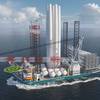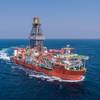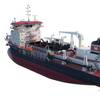ABB, Fincantieri Reduce Port Emissions
ABB, power and automation technology group, and Fincantieri, Italian merchant and naval shipbuilder, have signed an agreement to collaborate on the construction, marketing and supply of high-voltage shore connection (HVSC) systems to provide electricity to vessels in port.
Harbor facilities around the world are taking a close look at shore-to-ship connections as a way of reducing emissions from ships in port and improve air quality for surrounding communities.
HVSC systems enable ships to draw electricity from onshore power grids while in port to operate onboard equipment as refrigeration units, lighting, cooling and heating systems, instead of burning fuel oil to run electrical generators.
"ABB successfully delivered the world’s first shore connection to the port of Gothenburg in January 2000," said Veli-Matti Reinikkala, head of ABB's Process Automation division.
For a large cruise ship on a 10-hour stay in port, a shore connection can cut fuel consumption by up to 20 metric tons and reduce carbon dioxide emissions by 60 metric tons: equivalent to the total annual emissions of 25 European cars. In Sweden, shore connections have reduced annual CO2 emissions in the ports of Gothenburg, Stockholm, Helsingborg and Pitea by 6,000 metric tons annually, according to the Swedish Environmental Research Institute IVL.
The new shore connection systems to be developed by ABB and Fincantieri will meet all current international standards, and can be installed on ships while under construction, docked for maintenance or even out at sea.
Shore connections are now available at ports in the United States, including Los Angeles, Long Beach, San Francisco, San Diego, Seattle and Juneau, in Canada at Vancouver, and, in Europe, at ports in Germany, Sweden, Finland and Holland.
Fincantieri and ABB are already collaborating through Seastema S.p.A, a joint venture company tasked with designing and developing integrated automation systems for the marine sector.
(www.abb.com)










